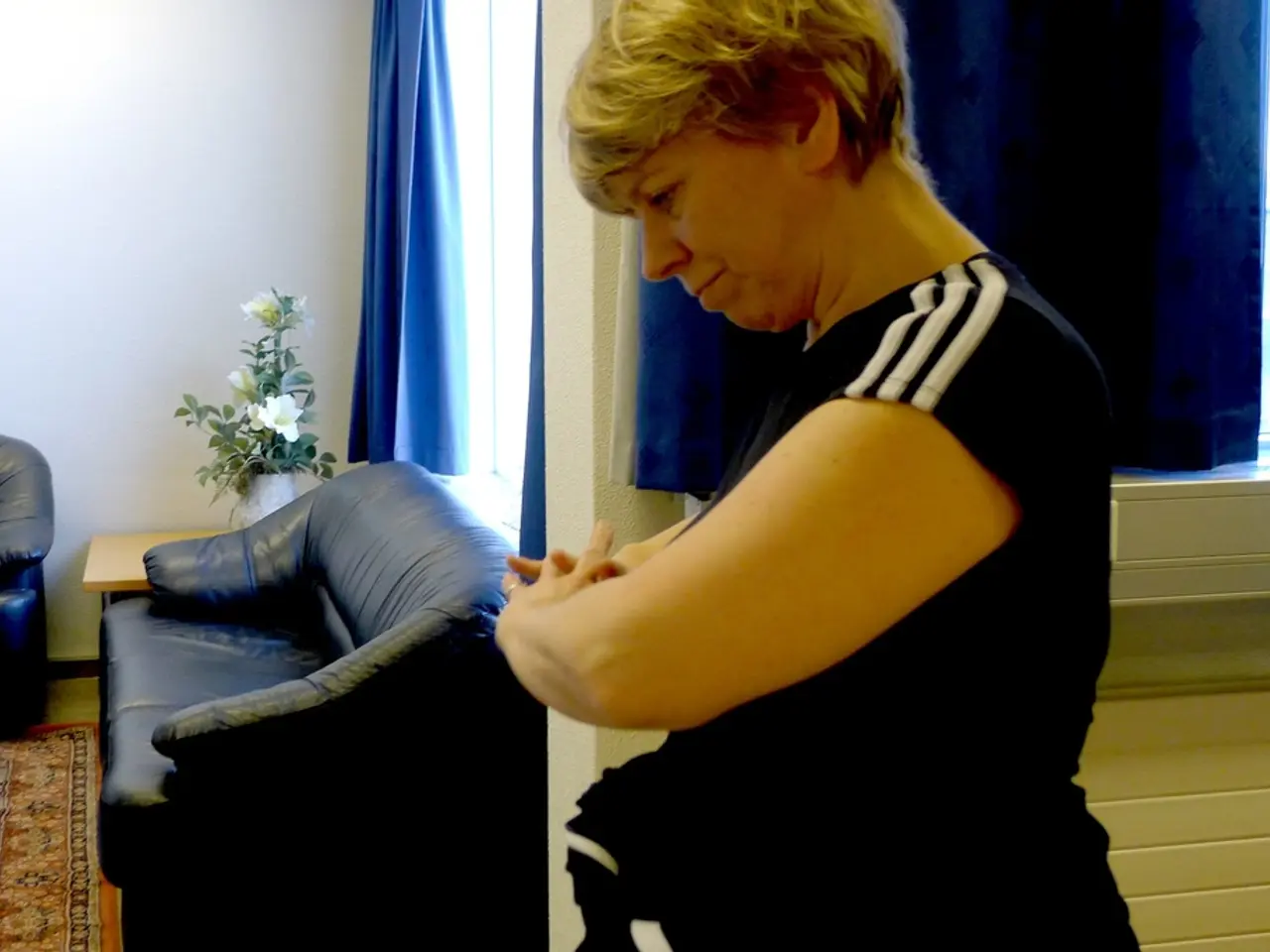Essential Exercises Non-Negotiable: A Fitness Instructor Reveals Four Fitness Regimens for Youthful Vigor and Muscular Strength
Anti-Aging Mobility Routine: A Comprehensive Approach to Injury Resistance and Full-Body Mobility
As we age, our bodies naturally lose muscle mass and flexibility. However, incorporating resistance training and mobility work can help counteract this, ensuring we maintain functionality and independence.
Trainers Milad and Ryan from Tailored Fit PT have shared an Instagram Reel with a four-exercise routine designed to keep the body injury-resistant. This routine targets muscles and joints across the entire body, including the hips, shoulders, legs, and back.
To perform this routine, you'll need a pair of light dumbbells and a step, but any raised surface can be used instead. The exercises use moves that strengthen, lengthen, and support muscles and joints.
The anti-aging mobility routine recommended by Tailored Fit PT focuses on improving injury resistance and enhancing full-body mobility. Key elements of the routine typically involve:
- Soft tissue work like foam rolling or targeted lacrosse ball releases to reduce neural tension and prepare tissues for movement.
- Active mobility drills such as 90/90 hip switches, thoracic spine windmills, controlled shoulder CARs (controlled articular rotations), and deep squat holds combined with proper breathing techniques.
- Strength reinforcing mobility with loaded exercises such as goblet squats with pauses, overhead carries, kettlebell windmills, and lunges to maintain mobility gains while building strength and stability.
- Multi-directional movement training incorporating lateral, rotational, and cross-body movements to promote coordination and full-body function.
- Focus on proper breathing and core engagement during all exercises to improve spine stability and movement efficiency.
- Consistency and gradual progression, emphasizing control over speed and avoiding high-intensity bursts to support longevity and injury resistance.
Implementing this routine means starting sessions with soft tissue release and gentle mobility drills, followed by more demanding controlled loaded movements. It is important to prioritize joint-specific warm-ups for ankles, hips, and thoracic spine and to progressively overload while maintaining movement quality to build durable mobility across the entire body.
The routine often includes:
- Soft tissue release (foam rolling, lacrosse ball work) focused on key tight areas like hips, thoracic spine, shoulders.
- Dynamic active mobility drills such as 90/90 hip switches, thoracic spine windmills, controlled shoulder CARs, and deep squat holds with breath control.
- Loaded mobility exercises (e.g., goblet squats with pause, overhead carries).
- Multi-directional movements for rotation and lateral control (kettlebell windmills, overhead lunges).
- Breathing and core engagement throughout.
- Repeat regularly with gradual progression, focusing on smooth, controlled repetitions.
This comprehensive approach improves joint range, muscle activation, motor control, and tissue health to enhance injury resistance and mobility longevity. For best results, personalized assessment and progression from a physical therapist or trainer familiar with this method are recommended.
The routine includes four exercises: step downs, dumbbell shoulder rotations, split squats, and a couch stretch. These exercises specifically target areas prone to injury and discomfort, such as the shoulders and knee joints.
Regular practice of these exercises can lead to improvements in how the body feels and moves. If you want a precise step-by-step routine from Tailored Fit PT, the video above demonstrates the moves and recommended repetitions for each exercise in the routine.
Embracing an anti-aging mobility routine like this one can help individuals maintain their physical ability as they age. For more routines like this one, try the favourite exercises for longevity.
- To counteract the loss of muscle mass and flexibility that occurs as we age, a comprehensive anti-aging mobility routine focusing on injury resistance and full-body mobility, such as the one recommended by Tailored Fit PT, can be incorporated.
- The anti-aging mobility routine typically encompasses various elements like soft tissue work, active mobility drills, strength reinforcing mobility exercises, multi-directional movement training, focus on proper breathing and core engagement, and consistency in performing exercises with gradual progression.
- The routine, consisting of exercises like step downs, dumbbell shoulder rotations, split squats, and a couch stretch, targets areas like the hips, shoulders, legs, and back, helping individuals maintain physical ability and mobility as they age.




